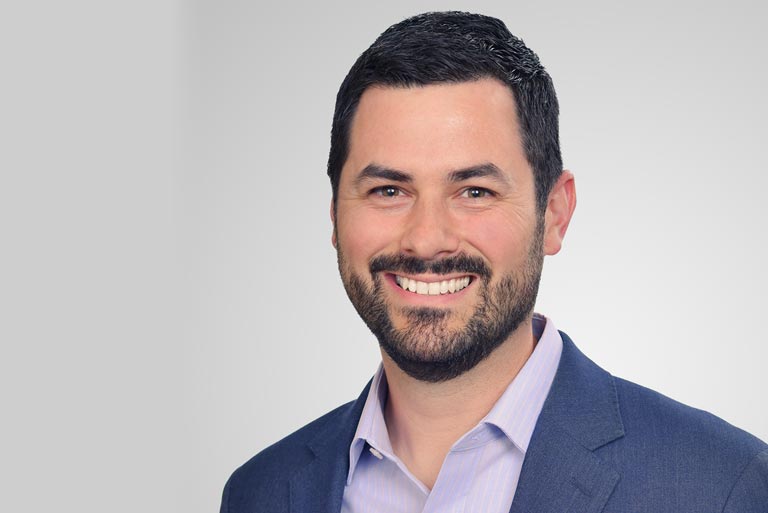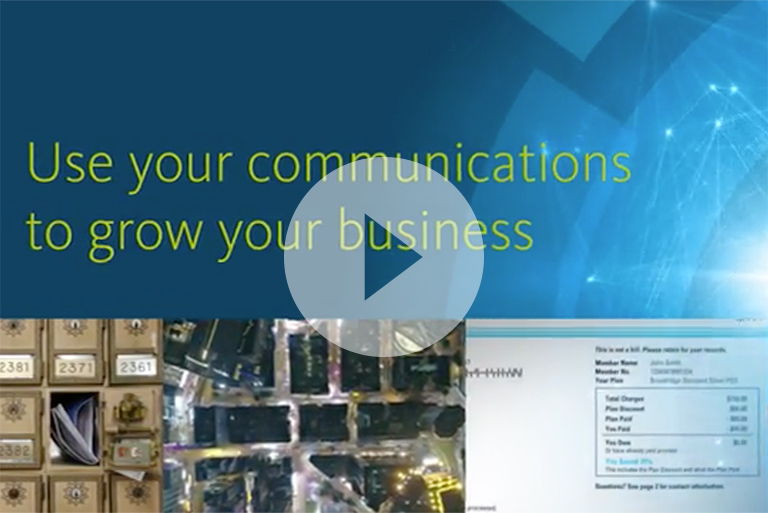Episode 4: “Growing Digital Adoption by Embracing Existing Customer Behavior” with Chris Johnson, CEO of Inlet
Getting customers to go paperless is no longer enough for businesses. They also want their customers to visit their website and use their app to engage and interact – with the ultimate goals of buying more products and services, facilitating self-service options and increasing loyalty. However, research shows that many consumers desire a centralized location to receive and manage their digital essential communications from their providers – much like a mailbox consolidates their print communications. Join Broadridge's Matt Swain as he discusses the evolution of digital delivery and the benefits for both businesses and consumers with Inlet CEO Chris Johnson.
The not-so-simple story with a happy ending: “The basic story is that Inlet is a company that delivers e-bills and electronic statements to 6,500 locations – all online, all digital. That's a simple story. The more exciting part is that we deliver to emerging destinations, as well as bank bill pay destinations. We're capturing what's great about what consumers are already doing today digitally, leveraging existing behaviors, and extending into all sorts of new digital places. For years, consumers have been able to get and pay their bills at their bank, but we're enabling bills to be delivered to banks with prepopulated data, like amount due, due date, payment information, even auto-pay. We're also delivering bills to places like Google Drive, Dropbox, Amazon Drive, and a variety of others. This is creating a consolidated location for customers, which provides convenience to consumers and cost savings for billers – from service costs to material costs, like paper, postage, printing, insertion. It’s great for both billers and consumers.”
Increasing customer loyalty with digital rewards: “What we're doing that’s different from the last 20 years of online banking is delivering the actual PDF of the bill to the bank. We're pre-populating a whole lot of metadata to make it more convenient for the consumer, and enabling them to access a variety of functionality. For example, depending on the bank, you might be able to get 18 months worth of historical bills; you might also be able to get customer service and support information right next to the bill; and you may be presented with offers by your billers that make you think, ‘Hey, I'm really glad I'm a customer of this biller. I'm glad I'm a customer of the bank’ – and this digital experience rewards the consumer for being loyal to both of them.”
Show me you know me: “To make the online banking sign-up process easier, we’re working to automatically propose a list of billers that a consumer may have based on their name and address. For example, based on this information, we can tell that you may have an account with a certain utility or cable provider, and we can suggest you connect with them. We can leverage bills and say to consumers, ‘With your permission, I can make your experience easier and better by connecting you with your providers.’ Once we have permission to do that, we can determine what bills are likely going to a consumer this month and route them to their bank bill pay destination so that they are all in one place. That’s a quantum leap from today’s bank bill pay experience. It also enables banks to get even more e-bills delivered while offering a better customer experience at the same time.”
A good compromise: “We recognize that billers want to be able to communicate in their own way through bank channels. A challenge has been getting the billers to be comfortable with their customers going elsewhere when they want to drive eyeballs back to their own site. This new solution is a good compromise since it is complementary to a biller-direct site. Nobody’s saying, ‘Stop building your biller-direct website, stop building your app, go and invest in this.’ The cost of participating in this kind of network is so marginal that it's actually fully-covered by the savings that you get operationally from not sending that piece of mail to a customer. So, these consolidator destinations, regardless of where they are, are really complementary to a company’s existing digital strategy. In many ways, you might think of them as extending the brand to a place that it's never been before.”
Pick a winner: “Consumers aren’t going to pick one digital channel as the winner. They want choice, and so they are going to expect providers to integrate with their favorite digital channel, pretty much making companies integrate with all digital channels to support their entire customer base. That doesn't necessarily work with an enterprise's roadmap due to limited development and IT resources; you need to have a business case to justify it. Our job is to figure out the right destinations for our clients and make it easy to integrate with us. Our one integration to reach many channels solves the "picking a winner" problem. We know that today's winners from a payment app perspective may be totally upstaged by a new disruptive capability that comes out tomorrow. Whoever figures out the best customer experience is going to see consumers migrating in that direction. So, we've pledged to keep an eye on the landscape every day, and, when we see consumers moving in a direction toward an app or payment experience, we're going to integrate with that app.”
Future of bills and statements: “From a future evolution perspective, I think the biggest changes we’re going to see are companies are going to want their bills and statements to reach the customer in the way that that customer wants to be reached. Historically, we had all this regulation that said it had to go into a post office box or to a physical mailbox. Then regulations started supporting e-delivery, and companies started emailing customers notifications that their bill or statement is available on their website, just filling up the inbox. Now, what we're seeing is consumers want a lot more. If you can deliver a statement to a cloud storage drive, notify consumers of their bill on their cell phones, and support payments through Apple Pay, wouldn't that be a better experience? It’s a slightly different story for statement producers. When they send a notice that the statement or quarterly report is here, they want clients to engage with their brokers, maybe figure out how to retire someday. The document itself becomes the artifact and that artifact can drive activity and action. I think that's where our market is going to evolve.”
Never miss an episode: Click the icon to subscribe to the Reimagining Communications podcast on the channel of your choice.












